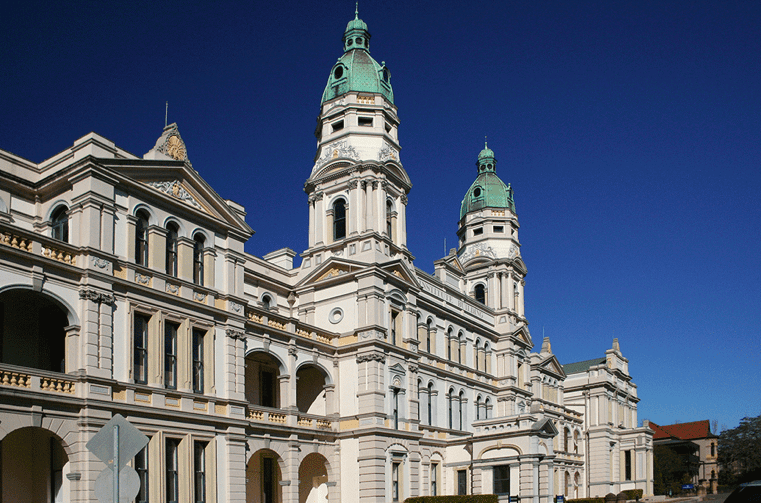The University of Sydney has connections with significant points in Deaf history, from the building of the oldest Deaf school in Australia to the coining of the name of the language itself.
If you enter the Institute building via the front archway you will see stonework reading “then the eyes of the blind shall be opened and the ears of the deaf be unstopped and the tongue of the dumb sing”. This is a remnant from the building’s use as a school for children who are deaf or blind. In 1860 Thomas Patterson, a Deaf man, established the first Deaf school in Australia, now known as the Royal Institute for Deaf and Blind Children (RIDBC). Shortly after, the Institute building was built for the school to give capacity for boarders. The school resided in the Institute building from 1872 for 90 years until the site was purchased by the University of Sydney in 1961. The school moved to North Rocks.
Thomas Patterson had been educated at the Edinburgh Deaf and Dumb Institution and had also worked as the secretary and treasurer for the Edinburgh Deaf and Dumb Society. As a result, he brought the Scottish sign language and teaching methods with him. Different schools were established in Australia by different teachers and some Deaf children went to the UK for school. Thus, Auslan was influenced by British, Scottish and Irish sign language.
Over time Auslan developed its own characteristics and unique signs. Residential schools, including RIDBC, contributed to the development of language variations. For example, the sign for ‘library’ looks like a hair clip. This is because the librarian at a Victorian school wore a hairclip and the sign for library became associated with her sign name. Auslan now also has influences from American sign language. From 1860 onwards the school taught blind students as well as those who were deaf. Next time you visit the building or walk past, consider its history. Imagine the Deaf children signing in the halls and running up and down the steps, and classes over the years both spoken and signed.
The term Auslan itself also has connections to the University of Sydney. Auslan is made up of the words AUstralian Sign LANguage and was coined by Trevor Johnston, a linguist who finished his PhD “Auslan the Sign Language of the Australian Deaf Community” at USyd in 1989. Trevor Johnston’s work on the linguistics of Auslan has helped with the recognition of Auslan as a natural language distinct from other Signed or spoken languages.
Now the university has a sign language society. It was started at the end of 2018 by students learning Auslan. It aims to facilitate others to learn of Auslan and develop understanding of the Deaf community and culture, as well as to provide a space for Deaf and hearing people to communicate in Auslan. Since 2018 it has enabled over 80 students and staff to start learning sign language and about the Deaf community. The Society works with Deaf organisations to facilitate classes taught by Deaf trainers who share their language, culture, and experience. While beginner classes are not being run this semester, the society plans to run them again next year and can offer advice on getting started. They also run a conversation group and have a petition to ask the University to run Auslan as an elective subject and as a language major.
You can check out their website at https://sites.google.com/view/usydsignsoc/home
A note on language
Deaf and dumb was historically used to refer who were deaf. Dumb was used to mean mute. It is no longer appropriate terminology. Many people who are deaf do speak and people who are deaf are certainly not dumb by the modern meaning of the word!





